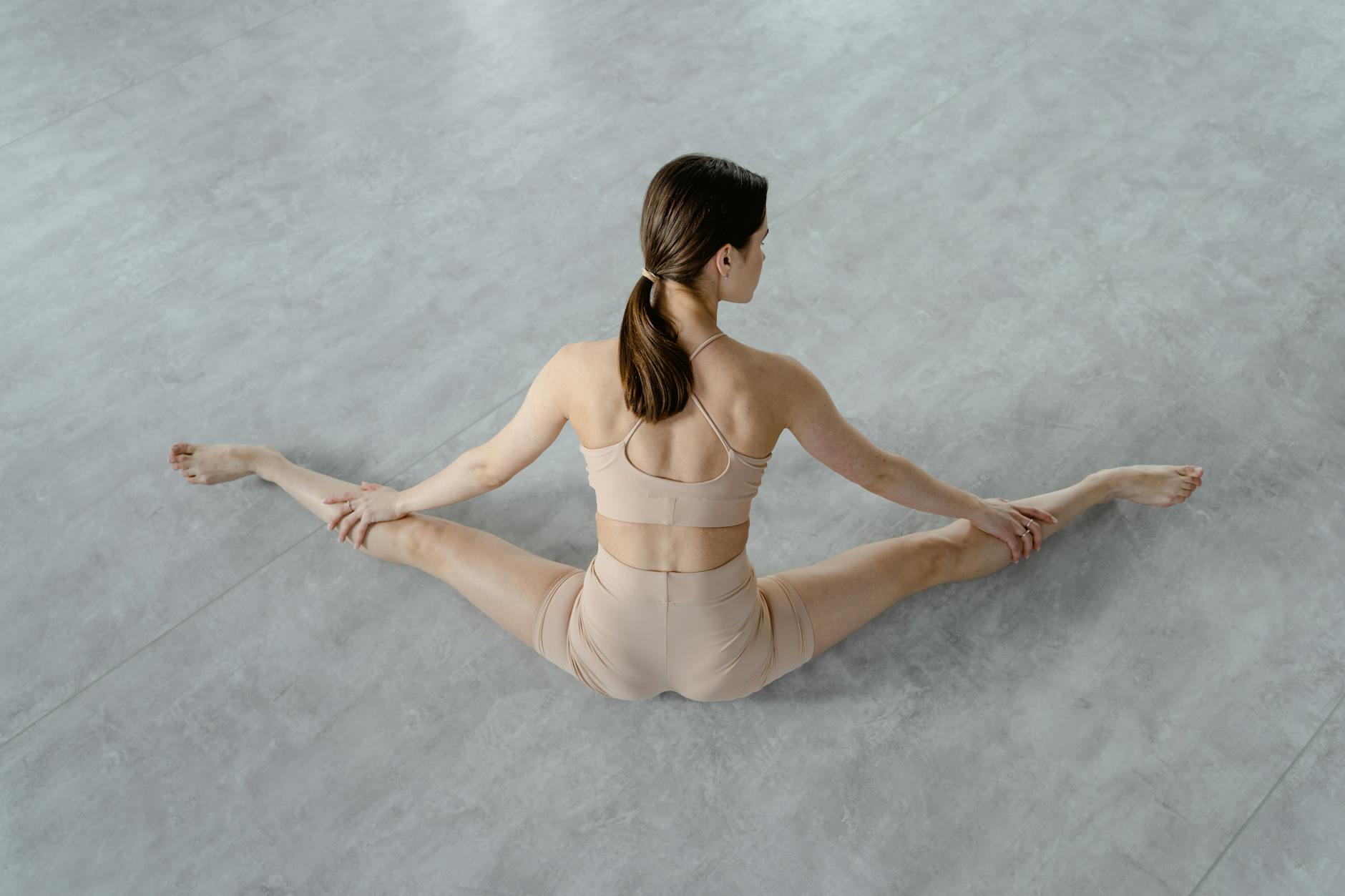Gym Workout Plan For Beginners Female
Gym Workout Plan For Beginners Female

Ever stood in a gym surrounded by machines that look like medieval torture devices, thinking, “Where do I even start?” If you’re nodding right now, you’re not alone. About 67% of women abandon their fitness journey within the first month because they feel completely lost.
I’m about to save you from becoming part of that statistic with a gym workout plan for beginners female bodies will actually respond to—no complicated jargon, no impossible expectations.
This isn’t about transforming into a fitness model overnight. It’s about building strength, confidence, and a routine that sticks without feeling like you need an engineering degree to use the equipment.
But before we dive into the actual workouts, there’s something critical about female physiology that most generic plans completely ignore…
Understanding Your Fitness Journey as a Female Beginner

Why Starting with a Structured Workout Plan Matters
Walking into a gym without a plan is like heading to the grocery store without a shopping list. You end up wandering aimlessly, trying random machines, and leaving without real results.
A structured workout plan gives you direction. It’s your roadmap to results. When you have a plan that tells you exactly which exercises to do, how many reps, and which days to train, you eliminate the guesswork that stops most beginners in their tracks.
The beauty of following a structured plan? You can actually track your progress. Nothing beats the feeling of increasing your weights or noticing you’re less winded after that set of squats. These small wins keep you coming back for more.
Plus, a proper plan helps prevent injuries by ensuring you’re working different muscle groups appropriately and including adequate rest days. Nobody wants to be sidelined with an avoidable injury just as they’re building momentum.
Setting Realistic Goals for Long-term Success
Forget those “get fit in 30 days” promises. Real fitness journeys don’t have expiration dates.
Your goals need two key qualities: specificity and attainability. Instead of “I want to get toned,” try “I want to be able to do 10 full push-ups within three months.” See the difference? One is vague; the other gives you a clear target to work toward.
Break down your big fitness dreams into smaller, achievable milestones:
| Timeline | Goal Type | Example |
|---|---|---|
| Weekly | Process | Complete all 3 scheduled workouts |
| Monthly | Performance | Add 5 pounds to my squat weight |
| Quarterly | Result | Fit into my favorite jeans comfortably |
Remember, your body changes at its own pace. Some weeks you’ll crush your workouts; others you might struggle to get to the gym at all. That’s not failure—it’s being human.
Overcoming Common Gym Anxieties for Women
That fear you feel about walking into the weights section? You’re not alone. Gym anxiety is incredibly common, especially for women.
The dreaded “everyone is watching me” feeling hits most beginners hard. Truth bomb: most people are too focused on their own workouts to notice yours. They’re probably wondering if they look weird doing hip thrusts too.
Try these anxiety-busting strategies:
-
Visit during off-peak hours for your first few sessions
-
Bring a friend for moral support
-
Wear clothes you feel comfortable and confident in
-
Pre-plan your workout so you move with purpose
-
Remember that even the fittest person there started somewhere
That intimidating muscle guy by the squat rack? He’s probably the first to offer a spot if you ask. The gym community is generally more supportive than you might expect.
Essential Gear and Gym Etiquette for First-timers
You don’t need fancy outfits or expensive shoes to start working out. Begin with basics:
-
Comfortable, moisture-wicking clothes that allow movement
-
Supportive sports bra (this is non-negotiable!)
-
Athletic shoes with decent support
-
Water bottle
-
Small towel
-
Optional: fitness tracker or workout app
As you progress, you might want to invest in lifting gloves or specific shoes for certain activities.
Now, about gym etiquette—these unwritten rules will help you blend in like a pro:
-
Wipe down equipment after use (seriously, nobody wants your sweat)
-
Return weights and equipment to their proper places
-
Avoid hogging machines during busy times
-
Keep phone calls outside the workout area
-
Respect personal space—don’t hover waiting for equipment
Don’t worry about looking like you don’t belong. Every regular gym-goer remembers their first awkward days. Ask questions when needed—most staff and even other members are happy to help a newcomer find their footing.
Building Your Foundation: First Month Workout Plan

A. Full-body Workouts vs. Split Routines: What Works Best for Beginners
Walking into a gym for the first time is intimidating. Everyone seems to know what they’re doing while you’re trying to figure out which machine does what.
Here’s the truth: as a beginner, you don’t need a complicated routine. You need something that works.
Full-body workouts are your best friend when starting out. Why? Because they:
-
Give you more practice with fundamental movements
-
Burn more calories per session
-
Require just 2-3 gym visits per week
-
Allow more recovery time between sessions
Split routines (working different body parts on different days) sound fancy, but they’re overkill for beginners. They require 4-6 gym days weekly and less recovery time for each muscle group.
Here’s how they stack up:
| Workout Type | Best For | Frequency | Recovery | Results for Beginners |
|---|---|---|---|---|
| Full-body | Beginners | 2-3x/week | 48+ hours between workouts | Faster overall progress |
| Split routines | Intermediate/Advanced | 4-6x/week | 7 days between same muscle groups | Too much too soon |
As a beginner, your body responds to almost any stimulus. Don’t overcomplicate things. A simple full-body routine will give you better results with less gym time.
B. The Perfect 3-Day Weekly Schedule for Maximum Results
Got three days a week to transform your body? Perfect. That’s all you need.
Here’s your ideal beginner schedule:
Monday: Full-body Workout A
-
Squats: 3 sets of 10 reps
-
Chest press: 3 sets of 10 reps
-
Seated rows: 3 sets of 10 reps
-
Shoulder press: 2 sets of 12 reps
-
Plank: 3 sets of 20-30 seconds
Wednesday: Full-body Workout B
-
Lunges: 3 sets of 10 reps each leg
-
Push-ups (modified if needed): 3 sets of 8-10 reps
-
Lat pulldowns: 3 sets of 10 reps
-
Bicep curls: 2 sets of 12 reps
-
Glute bridges: 3 sets of 15 reps
Friday: Full-body Workout C
-
Deadlifts (light): 3 sets of 10 reps
-
Incline chest press: 3 sets of 10 reps
-
Seated cable rows: 3 sets of 10 reps
-
Tricep dips: 2 sets of 12 reps
-
Russian twists: 3 sets of 10 each side
Start each workout with 5-10 minutes of cardio to warm up, and finish with 5 minutes of stretching.
This schedule works because it hits all major muscle groups multiple times per week while giving your body enough rest between sessions. The variety prevents boredom, and alternating between pushing and pulling movements minimizes fatigue during each workout.
C. Rest and Recovery: Why It’s Critical for New Exercisers
Think progress happens in the gym? Think again.
Your body actually builds strength and muscle when you’re resting, not when you’re sweating it out on the gym floor.
New exercisers often make the mistake of thinking more is better. They hit the gym daily, wondering why they’re exhausted, sore, and not seeing results.
Here’s what happens when you work out: you create tiny tears in your muscle fibers. During rest, your body repairs these tears, making the muscles stronger than before. Skip the rest, and you’re just creating damage without giving your body time to rebuild.
Signs you need more recovery:
-
Persistent soreness for more than 48 hours
-
Decreased performance
-
Unusual fatigue
-
Poor sleep
-
Decreased motivation
Quality recovery includes:
-
Sleep: Aim for 7-9 hours nightly
-
Nutrition: Protein helps repair muscles
-
Hydration: Water supports all recovery processes
-
Active recovery: Light movement on rest days
-
Stress management: High stress slows recovery
For beginners, 48-72 hours between full-body workouts is ideal. This doesn’t mean being completely inactive—light walking, stretching, or yoga on rest days can actually speed up recovery.
Remember: rest isn’t being lazy. It’s a crucial part of your fitness journey.
D. Progressive Overload: How to Safely Increase Intensity
Your body is smart. Do the same workout for weeks, and it stops changing because it’s already adapted.
Progressive overload is the answer—gradually increasing the stress placed on your body during exercise. But as a beginner, you need to do this carefully.
Here’s how to progress safely in your first month:
Week 1-2: Focus on Form
Master proper technique with lighter weights before worrying about lifting heavy. Good form prevents injuries and ensures you’re working the right muscles.
Week 3-4: Gradual Progression
Try these methods one at a time:
-
Add weight: Increase by 2.5-5 pounds when current weight feels manageable
-
Add reps: If you can do 12 reps comfortably, aim for 15 next time
-
Add sets: Move from 2 to 3 sets when you’re ready
-
Slow down: Taking 3-4 seconds on the lowering phase increases time under tension
-
Reduce rest: Gradually decrease rest periods from 90 to 60 seconds
Warning signs you’re progressing too quickly:
-
Form breaks down
-
Excessive soreness
-
Joint pain (different from muscle fatigue)
-
Feeling constantly exhausted
Track your workouts in a notebook or app to see your progress. Even small improvements are worth celebrating—maybe you added 5 pounds to your squat or did 2 more push-ups than last week.
Remember, fitness is a marathon, not a sprint. The goal is consistent, sustainable progress—not overnight transformation.

